-
Energy Is a “Constraint on Our Deployed Forces”: DOD DOEPP Nominee Sharon Burke
›March 24, 2010 // By Wilson Center Staff“I believe right now that energy is a vulnerability and constraint on our deployed forces,” said Department of Defense nominee and CNAS Vice President Sharon Burke yesterday morning at her confirmation hearing before the Senate’s Armed Services Committee. She described the tremendous cost—in lives, capital, and operational flexibility—of meeting the current fuel needs of troops in Afghanistan. Leading DOD’s efforts to account for the “full cost and full burden of energy,” she said, will be one of her priorities if she is confirmed.
“The committee and Congress have shown an acute interest in operational energy by creating this position,” said Burke, who would be the first person to serve as Director of Operational Energy Plans and Programs (DOEPP). “Sharon Burke has a deep understanding of the energy and climate change challenges facing the Department of Defense,” according to Geoff Dabelko, director of the Wilson Center’s Environmental Change and Security Program. “She would be able to hit the ground running if confirmed.”
Burke said that previous Congressional and presidential mandates have pushed DOD to improve the energy posture of its domestic facilities. She hopes to achieve similar successes in the operational arena. While she was reluctant to privilege any single solution, she suggested that more efficient weapon platforms and tactical vehicles, alternative fuels, and better business and acquisition processes could all be part of the mixture.
In response to a question from Senator Chambliss (R-GA) about climate change, Burke said, “I think the Quadrennial Defense Review (QDR) does a very good job laying out the proper role of the military forces.” The Wilson Center recently hosted a panel discussion on the QDR and the UK Defence Green Paper, at which the speakers repeatedly referred to the future DOEPP.
The nomination hearing largely avoided any tension concerning climate science and mitigation policies, focusing instead on military operations and ensuring the maximum effectiveness of U.S. forces. “My top priority would be mission-effectiveness,” Burke said. E&E; News reports Burke is expected to be confirmed.
Photo: Sharon Burke courtesy CNAS. -
Is the Melting Arctic a Security Challenge or Crisis? The View From Russia and Washington
›March 24, 2010 // By Geoffrey D. DabelkoIn his opening remarks at the Security Council of the Russian Federation’s meeting on climate change last week, Russian President Dmitry Medvedev framed climate change as a force for increased competition and “disputes between countries.” Unsurprisingly, he focused on the Arctic region and what he called the “inadmissible” and “unfair” threats to Russia’s access to the region’s resources:
We must not forget either that climate change can give rise not only to physical change, change in the nature around us, but can also see the emergence of disputes between countries over energy exploration and extraction, the use of marine transport routes, bioresources, and shortages of water and food resources. The countries bordering the Arctic region are already actively engaged in expanding their research, economic, and even military presence in the Arctic. Unfortunately, in this situation, we are seeing attempts to limit Russia’s access to exploring and developing Arctic energy deposits, which is inadmissible from a legal point of view and unfair in terms of our country’s geographical location and very history.
His reference to “shortages of water and food resources” fits squarely within the increasingly common view of climate change’s potential as a “conflict accelerant” (see, e.g., the U.S. Department of Defense’s 2010 Quadrennial Defense Review) or “threat multiplier” (as in CNA’s National Security and the Threat of Climate Change and statements from representatives of the UK and EU foreign offices).
But his Arctic comments sounded different than what I’ve been hearing in Washington. The Arctic rightfully gets a lot of attention for alarming rates of physical change, newly accessible resources, and potential new shipping routes. Yet remarks at a recent spate of Arctic climate and security discussions suggest officials in Washington view the geopolitical and trade issues more as “challenges” than “crises.”
For example, last month at the Stimson Center, and just yesterday at the Johns Hopkins University Applied Physics Lab, the U.S. Navy’s director of Task Force Climate Change and oceanographer, Rear Admiral David Titley, used “challenge” rather than “crisis” to depict the security situation in the far North. At numerous panels, officials and experts expressed confidence that the Arctic Council and related institutions are forums robust enough to manage current and future disputes.
Ironically, one of those key institutions is UNCLOS, the Law of the Sea treaty, which has been ratified by 157 countries, but not the United States. U.S. military and civilian officials alike see ratification as a key step for the United States to represent its interests in these critical multilateral settings. Nevertheless, we can anticipate some knee-jerk demagoguery about the treaty ceding U.S. sovereignty to the United Nations, so the Senate is unlikely to take up the issue until after the fall 2010 elections.
I want to thank friend and colleague Alexander Carius, co-director of Adelphi Research, for calling President Medvedev’s speech to my attention.
Photo: Russian President Dmitry Medvedev, courtesy Flick user World Economic Forum -
Tapping In: ‘Secretary Clinton on World Water Day’
›March 23, 2010 // By Julien Katchinoff “It’s not every day you find an issue where effective diplomacy and development will allow you to save millions of lives, feed the hungry, empower women, advance our national security interests, protect the environment, and demonstrate to billions of people that the United States cares. Water is that issue,” declared Secretary of State Hillary Clinton at a World Water Day event hosted by the National Geographic Society and Water Advocates.
“It’s not every day you find an issue where effective diplomacy and development will allow you to save millions of lives, feed the hungry, empower women, advance our national security interests, protect the environment, and demonstrate to billions of people that the United States cares. Water is that issue,” declared Secretary of State Hillary Clinton at a World Water Day event hosted by the National Geographic Society and Water Advocates.Alongside speeches by representatives from government and the non-profit sector, Secretary Clinton repeatedly emphasized America’s support for water issues. “As we face this challenge, one thing that will endure is the United States’ commitment to water issues,” she asserted. “We’re in this for the long haul.” Beyond simply highlighting the importance of the issue, Secretary Clinton also affirmed commitment to new programmatic, cross-cutting initiatives that will target water as a keystone for development and peace.
ECSP Director Geoff Dabelko, who attended the event, noted that Secretary Clinton’s speech ran counter to the much publicized notion that water scarcity is an unavoidable catalyst for conflict.
She came down squarely on the side of inclusion by identifying water as both a ‘human security’ and ‘national security’ issue. At the same time, she did not fall prey to the common pitfall of arm-waving about water wars. She flagged conflict and stability concerns, but also raised solutions through meeting needs associated with water and development. She went out of her way to emphasize water’s potential for peace and confidence-building, reflecting a commitment to capturing opportunities rather than merely identifying threats.
Secretary Clinton highlighted five crucial areas that comprise the United States’ whole-of-government approach to water issues:
1. Building capacity:
Through efforts with international partners, the United States hopes to strengthen the abilities of water-stressed nations to manage vital water resources. Agencies such as the Millennium Challenge Corporation and USAID are implementing initiatives that will enhance national ministries and encourage regional management cooperatives.2. Elevating diplomatic efforts:
A lack of coordination between the numerous UN agencies, governments, and multilateral funding organizations hinders global water progress. By bringing this work together, the United States can act as a leader, demonstrating a positive diplomatic precedent for fragile and water-stressed nations.3. Mobilizing financial support:
Relatively small grants have achieved large impacts. Work by the United States to strengthen capital markets in the water sector shows that it is possible to earn large returns on water investments. Successful examples range from educational and awareness-building programs, to desalinization and wastewater treatment plants.4. Harnessing the power of science and technology:
Although there is no silver technological bullet to solve the global water crisis, simple solutions, such as ceramic filters and chlorine disinfection systems, do help. Additionally, sharing government-accumulated technological knowledge can have significant impacts, as demonstrated in a recent NASA-USAID project establishing an Earth-observation monitoring and visualization system in the Himalayas.5. Broadening the scope of global partnerships:
By encouraging partnerships and elevating water in its global partnership initiatives with NGOs, non-profits, and the private sector—all of which are increasingly engaged in water issues—the Department of State hopes to maximize the effectiveness of its efforts.The holistic approach advocated by Secretary Clinton reflects a distinct evolution of American diplomacy within this area, which is strongly supported by the water community. “The policy directions outlined in the speech, the five streams, represent a victory for those in and outside of government who have argued for a broad, rather than narrow, view of water’s dimensions,” said Dabelko. “The diversified strategy focuses on long-term and sustainable interventions that respond to immediate needs in ways most likely to make a lasting difference.”

In her concluding remarks, Secretary Clinton sounded a positive note, noting that for all of the press and attention devoted to the dangers of the global water crisis and the possible dark and violent future, dire predictions may be avoided through a smart, coordinated approach. “I’m convinced that if we empower communities and countries to meet their own challenges, expand our diplomatic efforts, make sound investments, foster innovation, and build effective partnerships, we can make real progress together, and seize this historic opportunity.”
Photo Credits: State Department Official Portrait; UNEP.
-
Maternal and Newborn Health as a Priority for Strengthening Health Systems
›Among the many initiatives that have recently been launched to strengthen health systems in the developing world, there is little consensus on execution. Traditional strategies for improving the health system, such as the vertical approach, which prioritizes communicable diseases, or the horizontal approach, which prioritizes non-communicable diseases, are limited in scope and fail to include a comprehensive gender lens.
To overcome the shortcomings of these two health financing approaches, the “diagonal” strategy combines them by “clearly defining priorities and utilizing these priorities to drive general improvements of the health system,” said Julio Frenk, dean of the Harvard University School of Public Health, at the Global Health Initiative’s third event in the “Advancing Policy Dialogue on Maternal Health” series.
Along with panelists Helen de Pinho of Columbia University, and Agnes Soucat of the World Bank, Frenk discussed how prioritizing key maternal health indicators can improve health systems and support the implementation of evidence-based interventions. Putting Women and Health First
Putting Women and Health First
Drawing on his experience as Mexico’s minister of health, Frenk said that clearly defining a set of priorities grounded in “women and health” drove the improvement of Mexico’s health system. “Picture three concentric circles. The core of these concentric circles is the prevention of maternal mortality and disability; the second circle [includes] other aspects of sexual and reproductive health in addition to pregnancy and delivery; the third circle includes other fundamental areas of women’s health and the intersection of women with the health system,” said Frenk.
Mexico used maternal mortality rates to measure quality of care and rectify weaknesses in the health system. “Every maternal death triggered an audit that could lead to a hospital losing its license to operate,” said Frenk. Additionally, these audits helped to identify gaps and prioritize investments in “equipment and supply of drugs…and networks [for] obstetric emergencies,” he added.
“This illustrates how you can take a specific set of priorities and drive them through,” argued Frenk. “Global health needs to get out of the traditional confines that have split the community between vertical and horizontal and adopt more integrated frameworks like the notion of women and health,” he said, which “will leave behind a better health system to deal with the next challenge.”
Measuring Maternal Health
The maternal health community agrees that to reduce maternal mortality rates, access to emergency obstetric care (EmOC) must be improved. “A simple assessment of an emergency obstetric care facility combines a number of aspects that are core to strong health systems,” said de Pinho. To reduce maternal mortality, a strong health system must be able to positively answer these key questions:
These questions monitor the availability, utilization, and quality of care, which signals whether “the health system is actually responding to the woman’s needs when they need it,” said de Pinho. These maternal health indicators “paint a picture for where next steps need to be taken,” she said.- Are there enough facilities providing EmOC and are they well distributed?
- Are women with obstetric complications using these facilities?
- Is the quality of the EmOC services adequate?
Rwanda’s Innovations in Health Financing
“When we talk to ministries of health we ask them what are the low-hanging fruits we can reach in the six years” until the deadline for meeting the Millennium Development Goals (MDGs), said Soucat. To implement methods with proven results, additional research data, monetary support, and political will are all necessary. Rwanda’s ministry of health used the health-related MDGs—particularly MDG 5 to reduce maternal deaths by 75 percent—to reform the health system and hold institutional and individual actors accountable.
Rwanda’s health system was reformed through five key pillars:
“The heart of the reform is to increase accountability to its citizens,” said Soucat. Rwanda’s results-based financing offered “incentives and salary supplements to workers who saw more patients and provided higher quality of care,” she said. Impact assessments demonstrate that all income groups in Rwanda benefited from this health care scheme; in three years family planning tripled and assisted deliveries increased by 13 percent –“something that has never been observed in Africa,” she said.- Fiscal decentralization increased community participation and allocated funds to district governments
- Performance contracts were established between the president and district mayors
- A performance-based financing system distributed money to health facilities based on results
- Community health insurance increased access and reduced out-of-pocket expenditures
- Autonomous health facilities were allowed to hire and fire personnel
Rwanda’s Ministry of Health conducted rigorous assessments to ensure quality services and demonstrate impact to the Ministry of Finance. “When talking about maternal health a strong dialogue between the Ministry of Health and Ministry of Finance is needed more than ever and centered around the production of results,” argued Soucat. Scaling up the results-based finance scheme in other African countries is possible, she said, but additional research is needed to better understand this scheme at the decentralized level. -
‘A Question of Quality: ’ World Water Day 2010
›March 22, 2010 // By Julien KatchinoffWorld Water Day 2010, dedicated to the issue of water quality, points to a challenge that is often omitted from the scarcity debate. Today, through a variety of global events, publications, and speeches, a large coalition of organizations, companies, and institutions will underline the importance of healthy ecosystems and water quality necessary for human well-being.
A participating partner in this initiative, the National Geographic Society, has made its special issue on water, Water: Our Thirsty World, available for free online. After registration, readers may find the following stories interesting:
“Water is Life” – Barbara Kingsolver
“The Big Melt” – Brook Larmer
“Sacred Waters” – John Stanmeyer
“The Burden of Thirst” – Tina Rosenberg
“Silent Streams” – Douglas H. Chadwick
“California’s Pipe Dreams” – Joel K. Bourne, Jr.
“Parting the Waters” – Don Belt
“The Last Drop” – Elizabeth Royte
Photo Credits: “Rural water pump near Ulundi, South Africa” Photo: Flickr User Trevor Samson, World Bank Photo Collection -
Imagine There Are No Countries: Conservation Beyond Borders in the Balkans
›International peace parks have captured the imagination of visionaries like Nelson Mandela, who called them a “concept that can be embraced by all.” Such parks—also known as transboundary protected areas—span national boundaries, testifying to the peaceful collaborative relationship between neighboring countries and to the co-existence of humans and nature.
Peace parks seek to simultaneously promote regional peace and stability, conserve biodiversity, and stimulate job creation. How can they accomplish such ambitious goals?- Biodiversity: The political borders and physical barriers within the park are removed, allowing animals and humans to migrate freely. In addition, surveys of the area’s biodiversity don’t stop at sovereign borders, but are instead conducted on an ecosystem basis.
- Job creation: Developing eco-tourism—one of the fastest-growing industries in the world—provides people living near peace parks an incentivized alternative to exhausting the very resource base on which their survival depends.
- Peace and stability: To jointly manage natural resources successfully requires countries to collaborate through cross-boundary committees on conservation, safety and security, finance, human resources, legislation, and tourism.
 My organization, International Peace Park Expeditions, uses experiential peacebuilding, academic programs, and professional trainings in international peace parks to integrate theory with practice. We seek to develop leadership and collaboration among three distinct, but complementary, groups: students and professors, transboundary protected area professionals, and youth from the peace park countries.
My organization, International Peace Park Expeditions, uses experiential peacebuilding, academic programs, and professional trainings in international peace parks to integrate theory with practice. We seek to develop leadership and collaboration among three distinct, but complementary, groups: students and professors, transboundary protected area professionals, and youth from the peace park countries.
Our Summer 2010 programs focus on the proposed peace park in the Western Balkans’ Prokletije/Bjeshket e Namuna mountains, between Albania and the newly independent countries of Montenegro (2006) and Kosovo (2008), which were formerly part of Yugoslavia. The Balkans Peace Park Project, a UK charity and their local network of partner organizations and individuals, first conceptualized the Balkans Peace Park, an area of approximately 4000 square km, in 2001.
This summer, participants in our professional training symposium will collaboratively develop a more precise and dynamic map. Students and young leaders in our other two programs will learn about peace parks while trekking together across the borders into all three countries.
Experiential Peacebuilding (July 19-25, 2010)
Experiential Peacebuilding programs combine outdoor experiential education and practical skills training in peacebuilding to foster the development of a community of young leaders capable of catalyzing positive peaceful changes in their communities. This summer’s program is being developed in conjunction with our local partner organizations (ERA and Marimangut in Kosovo; Outdoor Albania and High Albania in Albania; and PSD Prokletija in Montenegro). The primary goals of these programs are to unite youth from conflict-affected communities to develop relationships across borders; transform negative attitudes and stereotypes; and create a core group of young leaders with the skills, tools, and motivation to generate and direct changes in their communities.
Academic Expedition (June 7-26 and August 2-21, 2010)This three-week, three-credit course, “Conservation Beyond Borders,” will combine traditional academic teaching with proven experiential learning methodologies to create a unique, dynamic expedition that will provide students with a strong understanding of the theory and practice of international peace parks. Course readings and lectures will provide the academic base, and guest lectures from subject-matter experts working in the field will create the bridge; both will address sustainable forestry management, biodiversity surveys, eco-tourism plans, development and infrastructure planning, environmental conservation, water resource management, peacebuilding initiatives, and cross-border projects. First-hand experience trekking through the proposed Balkans Peace Park, crossing the borders of Albania, Kosovo, and Montenegro, and living among the local people will bring theory to life.
Professional Training Symposium (July 8-9, 2010)
This year’s Professional Field Training Symposium, “Critical Transboundary Environmental Linkages,” will bring together experts, policymakers, and stakeholders from the Prokletije/Bjeshket e Namuna region to discuss cross-border ecotourism, biodiversity mapping, and sustainable forestry management. The symposium seeks to build trust through cross-border collaboration, and to improve environmental management in the peace park region. Participants will create a Google Earth map to house shared environmental data and visit two project sites in the proposed peace park. Todd Walters is the founder and executive director of International Peace Park Expeditions. He holds a master’s degree in International Peace and Conflict Resolution from American University’s School of International Service, and is a National Outdoor Leadership School (NOLS) certified wilderness guide. While at AU, he worked as an intern for the Environmental Change and Security Program.
Todd Walters is the founder and executive director of International Peace Park Expeditions. He holds a master’s degree in International Peace and Conflict Resolution from American University’s School of International Service, and is a National Outdoor Leadership School (NOLS) certified wilderness guide. While at AU, he worked as an intern for the Environmental Change and Security Program.
Photos courtesy IPPE/Cory Wilson. -
Family Planning and Reproductive Health
›Adding it Up: The Costs and Benefits of Investing in Family Planning and Maternal and Newborn Health, a report by the Guttmacher Institute, asserts that “sustained and increased investment in sexual and reproductive health services in developing countries” would “contribute to economic growth, societal and gender equity, and democratic governance.” The report presents cost-benefit analyses of family planning and maternal and newborn health strategies in an effort to “guide decision makers, at the global, regional and country levels, in making investments that would reap the greatest returns for individuals and societies.” The Interagency Gender Working Group recently released Gender Perspectives Improve Reproductive Health Outcomes: New Evidence, argues for the importance of taking gender into consideration when developing interventions related to unintended pregnancies, maternal health, STIs, harmful practices (e.g. early marriage, genital cutting, and gender-based violence), and youth. The report, a follow-up to 2004’s The “So What?” Report: A Look at Whether Integrating a Gender Focus into Programs Makes a Difference to Outcomes, includes 40 specific examples of programs successfully integrating gender to improve reproductive health.
The Interagency Gender Working Group recently released Gender Perspectives Improve Reproductive Health Outcomes: New Evidence, argues for the importance of taking gender into consideration when developing interventions related to unintended pregnancies, maternal health, STIs, harmful practices (e.g. early marriage, genital cutting, and gender-based violence), and youth. The report, a follow-up to 2004’s The “So What?” Report: A Look at Whether Integrating a Gender Focus into Programs Makes a Difference to Outcomes, includes 40 specific examples of programs successfully integrating gender to improve reproductive health. -
Climate Change: A Threat to Global Security
› Having recently returned from Washington, where I shared a platform at the Woodrow Wilson Center with Deputy Assistant Secretary of Defense Amanda Dory, I am struck by how similar UK and U.S. thinking is on the national security implications of climate change. Our defense departments agree that the impact of climate change is likely to be most severe in areas where it coincides with other stresses, such as poverty, demographic growth, and resource shortages: areas through which much of the world’s trade already passes. We are also in agreement that climate change will accelerate global instability and that it is likely to shape our future missions and tasks. In particular we can expect to receive more frequent requests for assistance after extreme weather events.
Having recently returned from Washington, where I shared a platform at the Woodrow Wilson Center with Deputy Assistant Secretary of Defense Amanda Dory, I am struck by how similar UK and U.S. thinking is on the national security implications of climate change. Our defense departments agree that the impact of climate change is likely to be most severe in areas where it coincides with other stresses, such as poverty, demographic growth, and resource shortages: areas through which much of the world’s trade already passes. We are also in agreement that climate change will accelerate global instability and that it is likely to shape our future missions and tasks. In particular we can expect to receive more frequent requests for assistance after extreme weather events.
So if we recognize the threats, what can we do about them? In the United Kingdom we believe that the approach is two-fold. First, we need to address the problem that we have already caused, the damage that we have done to the climate out to about 2030, through adaptation and planning for potential scenarios. But to limit the threat to our security, we must also address the underlying causes.
Key to achieving this is limiting temperature rises to 3.6 degrees Fahrenheit, when compared with pre-industrial times, since beyond that, the risks will increase greatly. This will be no easy task and will require us to start cutting our emissions now, taking action by being more efficient and investing in low-carbon technology. The United Kingdom has the world’s first legally binding emissions reduction targets, and is investing in a variety of technologies, including wind, nuclear, and carbon capture and storage. These measures will not only contribute to our long-term security by reducing damaging carbon emissions, but they will also insulate us against fossil fuel price fluctuations and thereby increase our energy security.
It is the job of any responsible military to plan not just for the national security challenges that face us currently, but for those that might appear on our horizon in the future. Sometimes new challenges appear from newly destabilized areas of the world. Sometimes they arise from new methods of warfare, or new trends in science and technology. Often, they stem from changes in the conditions under which our militaries operate. Just as we are alive to geopolitical trends in every continent, and technical advances made by both our allies and those who seek to harm our interests, our militaries must proactively anticipate the environmental changes that will impact our national security in the coming years. Current military operations will, rightly, always be our highest priority, but we must also find time to address future threats, including climate change.
Indeed, in some countries climate change is already impacting on the work of the military. When I talk to colleagues from Africa and Southeast Asia it is apparent that they are already taking into account the consequences of climate change when determining their priorities.
The United States and United Kingdom can work together to establish a greater understanding of the security implications of climate change and how they will affect our missions and tasks. We cannot afford to be caught unprepared when climate-related conflicts challenge our ability to deliver our core mission of providing national security – a risk that we must avoid.
Rear Admiral Neil Morisetti is an active duty officer in the British Royal Navy and is the United Kingdom’s Climate Security Envoy
 A Publication of the Stimson Center.
A Publication of the Stimson Center.


 “It’s not every day you find an issue where effective diplomacy and development will allow you to save millions of lives, feed the hungry, empower women, advance our national security interests, protect the environment, and demonstrate to billions of people that the United States cares. Water is that issue,” declared Secretary of State Hillary Clinton at a
“It’s not every day you find an issue where effective diplomacy and development will allow you to save millions of lives, feed the hungry, empower women, advance our national security interests, protect the environment, and demonstrate to billions of people that the United States cares. Water is that issue,” declared Secretary of State Hillary Clinton at a 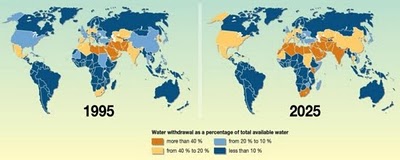
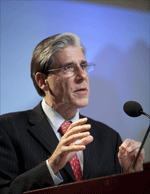 Putting Women and Health First
Putting Women and Health First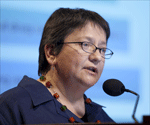
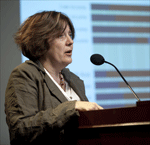
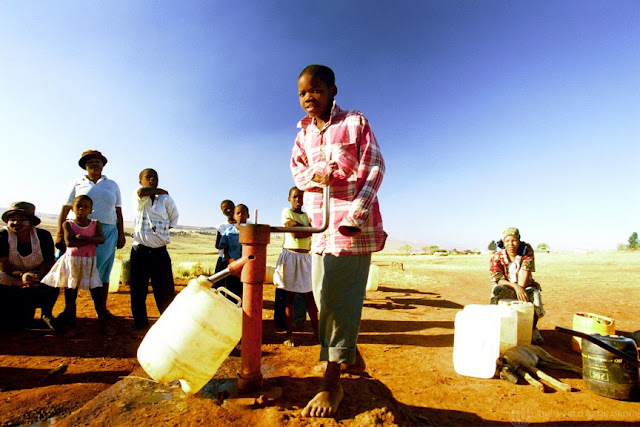
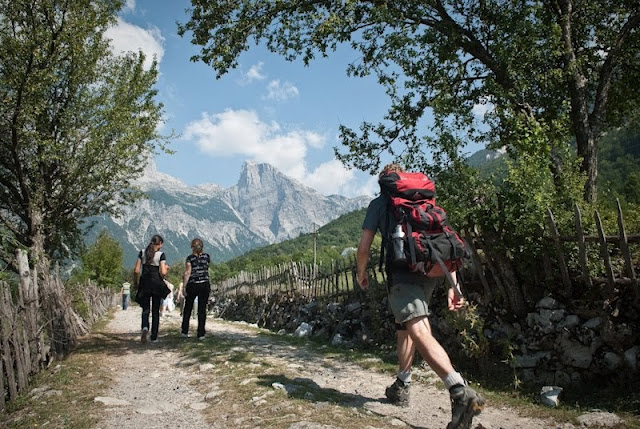




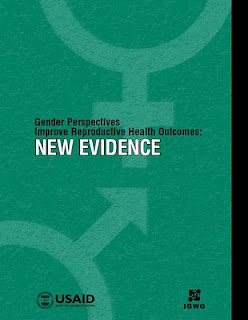 The
The 


